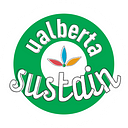Alberta food businesses are hungry for new ways to reduce waste
Farrah So’s master’s research sketches a roadmap for cutting food waste in the province.
By Riley Tjosvold
Alberta food businesses have an appetite for novel food waste reduction strategies such as converting scraps to bio-based materials and animal feed. That’s according to a survey conducted by Food and Bioresource Technology student Farrah So as part of her master’s thesis.
So surveyed over 100 restaurants, food retailers and food manufacturers in the province and found that although 59 per cent of respondents were interested in converting their food waste into materials such as bioplastics and biofuels, only five per cent had done so. Interest in using waste as animal feed was also high (31 per cent), but only 17 per cent of surveyed businesses had been sending waste to farms. Although 34 per cent of Alberta food businesses were donating food to charities, 37 per cent were interested but had not yet committed to sharing unsold food with people in need.
“We wanted to see what kinds of food waste reduction behaviours are happening in Alberta and identify opportunities to work towards greater adoption, especially for smaller businesses that may have a harder time implementing waste reduction strategies,” So said.
“The majority of participants agreed they were looking to reduce food waste. Many had managers who were encouraging reduction. Many were measuring their food waste as well. And there was high interest in all types of diversion methods, but few businesses were actually engaging in diversion.”
The slow uptake of certain diversion methods, such as conversion to bio-based materials and animal feed, is likely due to a lack of infrastructure in the province, So said.
“You need processing plants; you need businesses who manage the logistics of collecting waste. Even though we knew there weren’t many of these services available in Alberta right now, we wanted to gauge interest in them, and the interest is there,” she said.
Seventy per cent of of the retailers and restaurants surveyed had concerns about the legality and safety of gifting charities with food, which, if spoiled, could mean bad press or lawsuits. But So said that the province’s Charitable Donation of Food Act has eased some of the legal burden placed on businesses and made the donation process simpler. Increasing donations could be as straightforward as providing businesses with more information about how they can safely share their unsold food.
Nearly 80 per cent of respondents said they would switch to a new process or technology to reduce waste, but only 27.3 per cent would be willing to switch if costs increased.
“Individuals in companies see value in sustainability,” said John Wolodko, an associate professor in the Faculty of Agricultural, Life and Environmental Sciences (ALES) who supervised So’s research along with fellow ALES professor Sven Anders. “But there are economic barriers, and also a lack of access to more sustainable solutions. At the end of the day, these aren’t consumers making a personal choice. They’re running a business, and the business has to be economically sustainable.”
The survey also found that Edmonton businesses reported sending more of their food waste to landfills than their Calgary counterparts. This could be due to Calgary’s organic waste separation bylaw, which prohibits businesses from tossing food waste in the trash, the researchers said.
So and Wolodko hope that the study can address the scarcity of research on food waste and food waste solutions in Canada, and especially in Alberta.
“The other unique aspect of this study is that it looks at businesses. There’s a lot of research on consumers and how they view food waste, but we’re lacking information on businesses,” Wolodko said.
The researchers acknowledged that the survey may contain some bias due to the fact that it was voluntary. However, they see the work as an important first step.
“It may be useful in the future to conduct focus groups with a representative sample of people from every part of the food industry,” So said. “We hope these findings can be used by individuals working in waste management in the province to support their efforts to make the most out of the food being produced and sold in the province.”
